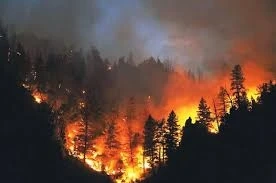Fire mitigation involves proactive measures to reduce the risk of fire and minimize its impact on people, property, and the environment. With the increasing frequency and intensity of wildfires, effective fire mitigation strategies are crucial for safeguarding homes and communities. This article explores various fire mitigation techniques, their benefits, and practical tips for implementation.
Understanding Fire Mitigation
Fire mitigation is a multifaceted approach that includes preventing fires, reducing fuel loads, creating defensible spaces, and enhancing the fire resistance of buildings and landscapes. The goal is to make environments less susceptible to fire and more resilient in the event of one.
Key Objectives of Fire Mitigation
- Preventing Ignition: Reducing the sources of ignition, such as electrical faults, open flames, and human activities.
- Reducing Fuel Load: Managing vegetation and other combustible materials to lower the amount of fuel available for a fire.
- Creating Defensible Spaces: Designing landscapes and structures to resist fire and provide safe zones for firefighting efforts.
- Enhancing Firefighting Capabilities: Ensuring that firefighting resources are readily available and effective in controlling and extinguishing fires.
Fire Mitigation Strategies
1. Vegetation Management
Vegetation management is a critical component of fire mitigation. By reducing the density of flammable vegetation and creating buffer zones, you can significantly lower the risk of fire spreading.
Techniques for Vegetation Management
- Thinning: Removing smaller trees and shrubs to reduce fuel load.
- Pruning: Trimming lower branches of trees to prevent ground fires from climbing into the canopy.
- Mowing: Regularly cutting grass and other ground cover to keep them at manageable heights.
- Controlled Burns: Conducting prescribed burns under controlled conditions to reduce accumulated fuel.
2. Creating Defensible Space
Defensible space is the area around a structure where vegetation and other fuels have been modified to reduce fire risk. This space allows firefighters to work safely and effectively.
Zones of Defensible Space
- Zone 1: The area within 30 feet of the structure. Keep this area clear of flammable vegetation and other combustibles.
- Zone 2: The area 30 to 100 feet from the structure. Reduce fuel load by thinning vegetation and creating breaks.
- Zone 3: The area beyond 100 feet. Manage this zone to reduce dense vegetation and maintain healthy forests.
3. Fire-Resistant Landscaping
Designing landscapes with fire-resistant plants and materials can significantly reduce fire risk. These plants typically have high moisture content, low resin, and slow growth rates.
Fire-Resistant Landscaping Tips
- Use Fire-Resistant Plants: Choose plants with high moisture content and low flammability.
- Mulch Carefully: Use non-combustible mulch materials, such as gravel or stone, instead of wood chips.
- Maintain Spacing: Space plants to prevent fire from spreading easily between them.
- Irrigate Regularly: Keep plants well-watered to reduce their flammability.
4. Structural Hardening
Improving the fire resistance of buildings and structures is crucial for fire mitigation. This includes using fire-resistant building materials and designs.
Structural Hardening Measures
- Fire-Resistant Roofing: Use materials such as metal, tile, or asphalt shingles rated for fire resistance.
- Fire-Resistant Siding: Choose non-combustible materials like stucco, brick, or concrete.
- Windows and Vents: Install double-pane windows and cover vents with metal mesh to prevent embers from entering.
- Gutters and Eaves: Keep gutters clean and cover eaves with fire-resistant materials.
5. Community Planning and Education
Community involvement and education are vital components of fire mitigation. By raising awareness and planning collectively, communities can enhance their resilience to fires.
Community Planning Strategies
- Firebreaks: Create firebreaks—gaps in vegetation or other combustible materials—to slow the spread of fires.
- Emergency Access: Ensure roads and driveways are wide enough for firefighting equipment and provide clear signage.
- Evacuation Plans: Develop and practice community evacuation plans to ensure quick and safe evacuations during a fire.
- Public Education: Conduct workshops and distribute materials to educate residents about fire mitigation practices and preparedness.
Best Practices for Fire Mitigation
Regular Maintenance
Regularly inspect and maintain properties to ensure fire mitigation measures are effective. This includes clearing debris, maintaining defensible space, and checking for structural vulnerabilities.
Collaborate with Local Agencies
Work with local fire departments, forestry services, and emergency management agencies to develop and implement fire mitigation plans. These organizations can provide valuable resources and expertise.
Stay Informed
Stay updated on fire weather conditions, fire danger ratings, and local fire activity. This information can help you make informed decisions about fire preparedness and response.
Use Technology
Utilize technology, such as fire mapping tools and weather monitoring systems, to enhance fire mitigation efforts. These tools can provide real-time information and predictive analytics to guide decision-making.
Tips for Effective Fire Mitigation
1. Regular Inspections
Conduct regular inspections of your property to identify and address potential fire hazards. Look for overgrown vegetation, accumulated debris, and structural vulnerabilities that could contribute to fire risk.
2. Clear Communication
Establish clear communication channels with neighbors and local authorities to coordinate fire mitigation efforts. Community cooperation can enhance overall effectiveness.
3. Emergency Preparedness
Prepare an emergency kit with essentials such as water, food, medications, important documents, and first aid supplies. Ensure that all family members know the evacuation plan and designated meeting points.
4. Proper Storage
Store flammable materials, such as firewood, propane tanks, and gasoline, away from structures. Keep these items in well-ventilated areas and follow safety guidelines for storage.
5. Practice Safe Behavior
Avoid activities that could start a fire, especially during high-risk periods. This includes using fire pits, barbecues, and outdoor power equipment. Always have a fire extinguisher or water source nearby when engaging in such activities.
Conclusion
Fire mitigation is an ongoing process that requires proactive measures, community involvement, and regular maintenance. By understanding and implementing effective fire mitigation strategies, individuals and communities can reduce the risk of fires and enhance safety. From managing vegetation and creating defensible spaces to hardening structures and planning collectively, each step plays a crucial role in building resilience against fire threats. Embrace these practices to transform your environment into a safer, fire-resistant space.



